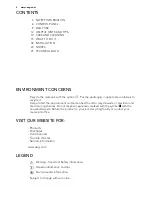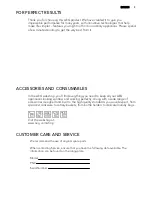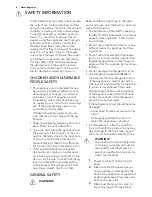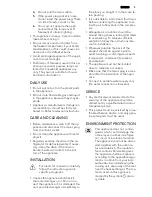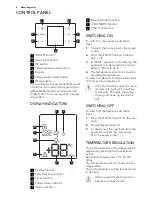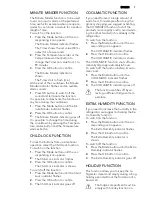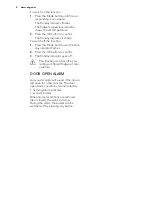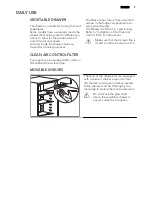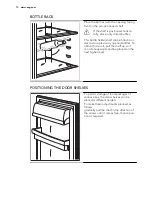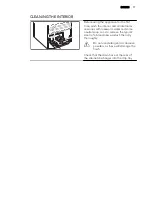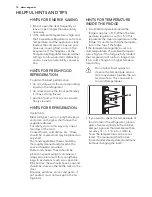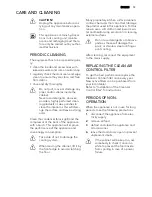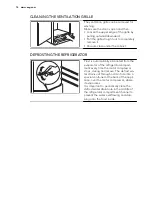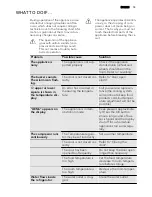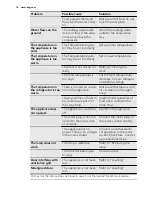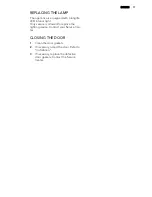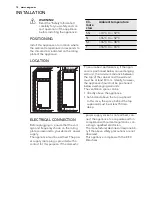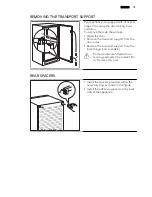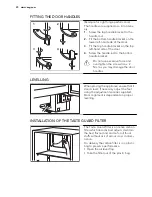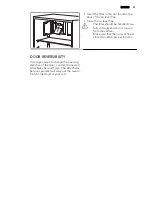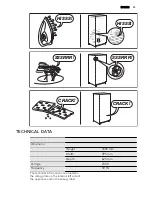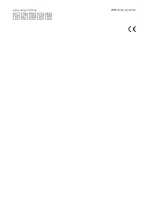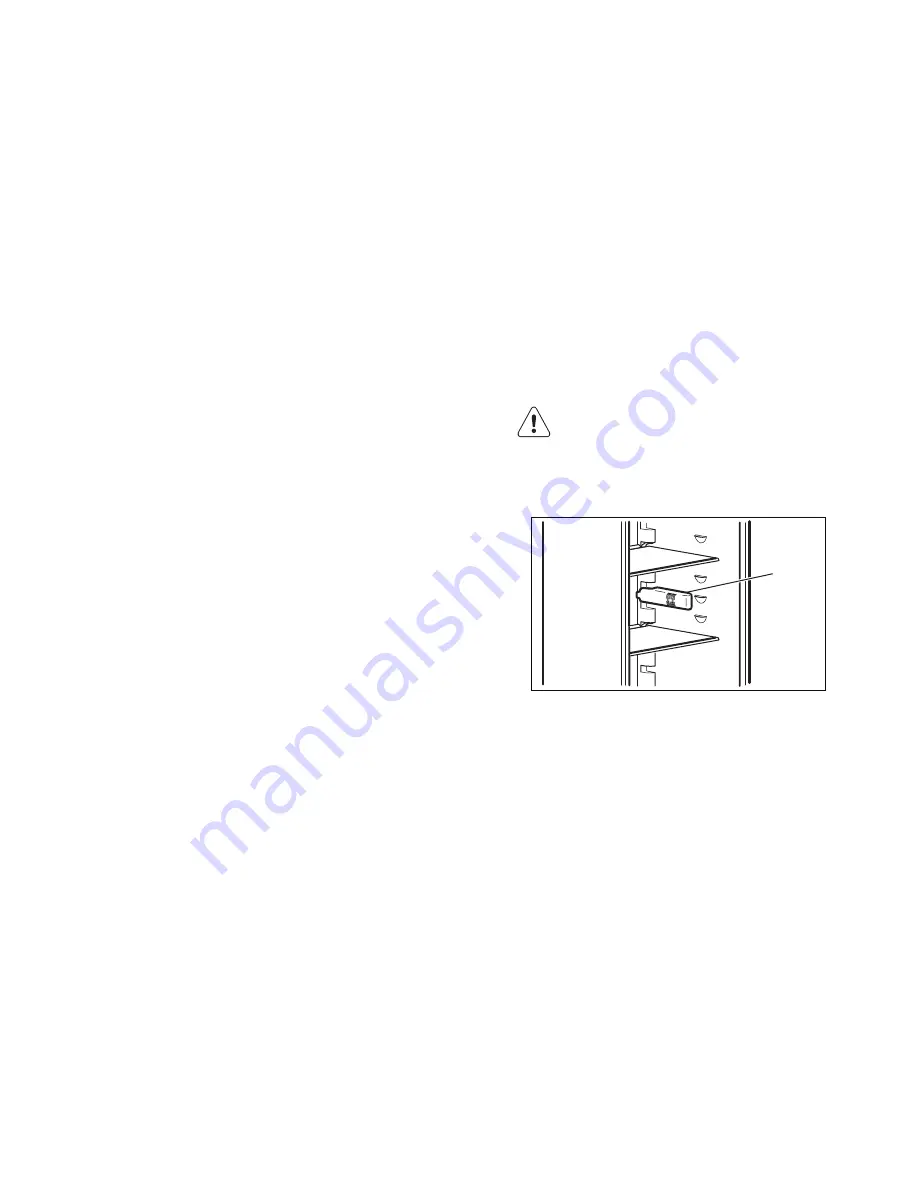
HELPFUL HINTS AND TIPS
HINTS FOR ENERGY SAVING
• Do not open the door frequently or
leave it open longer than absolutely
necessary.
• If the ambient temperature is high and
the Temperature Regulator is set to low
temperature and the appliance is fully
loaded, the compressor may run con-
tinuously, causing frost or ice on the
evaporator. If this happens, set the
Temperature Regulator toward warmer
settings to allow automatic defrosting
and so a saving in electricity consump-
tion.
HINTS FOR FRESH FOOD
REFRIGERATION
To obtain the best performance:
• do not store warm food or evaporating
liquids in the refrigerator
• do cover or wrap the food, particularly
if it has a strong flavour
• position food so that air can circulate
freely around it
HINTS FOR REFRIGERATION
Useful hints:
Meat (all types) : wrap in polythene bags
and place on the glass shelf above the
vegetable drawer.
For safety, store in this way only one or
two days at the most.
Cooked foods, cold dishes, etc..: these
should be covered and may be placed on
any shelf.
Fruit and vegetables: these should be
thoroughly cleaned and placed in the
special drawer(s) provided.
Butter and cheese: these should be
placed in special airtight containers or
wrapped in aluminium foil or polythene
bags to exclude as much air as possible.
Milk bottles: these should have a cap and
should be stored in the bottle rack on the
door.
Bananas, potatoes, onions and garlic, if
not packed, must not be kept in the re-
frigerator.
HINTS FOR TEMPERATURE
INSIDE THE FRIDGE
• A suitable temperature inside the
fridge is approx. +5° C. When the tem-
perature regulator is set to +5°C this
represents the mean temperature in the
fridge. It is normal with higher tempera-
ture in the top of the fridge.
If the temperature regulator is set to a
cold temperature, the ambient tempera-
ture is high or if the fridge is fully loaded
the compressor will run for a longer time.
If too cold, change to a higher tempera-
ture setting.
Do not place food against or
close to the temperature sensor
(A) or any shelves towards the wa-
ter drain hole. This can result in
too cold temperatures.
A
• If you want to check the temperature of
food stored in the refrigerator, place a
glass of water centrally in the cabinet,
and put a proper thermometer with an
accuracy of +/– 1 °C into it. After 6
hours the temperature can be moni-
tored. The measuring shall be per-
formed under steady-stated conditions
(without changing the load).
12 www.aeg.com


